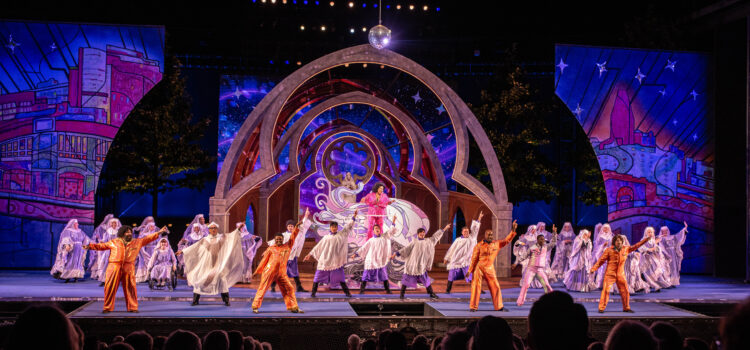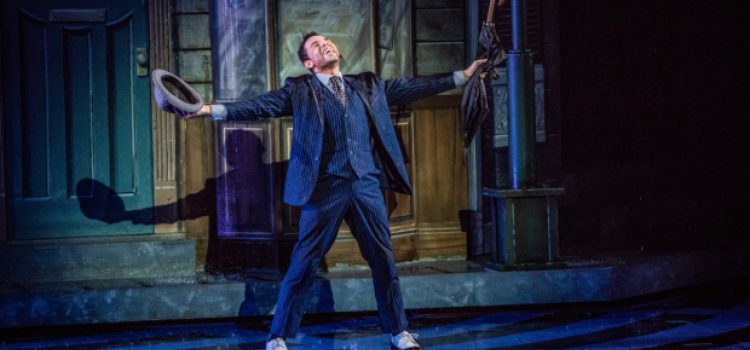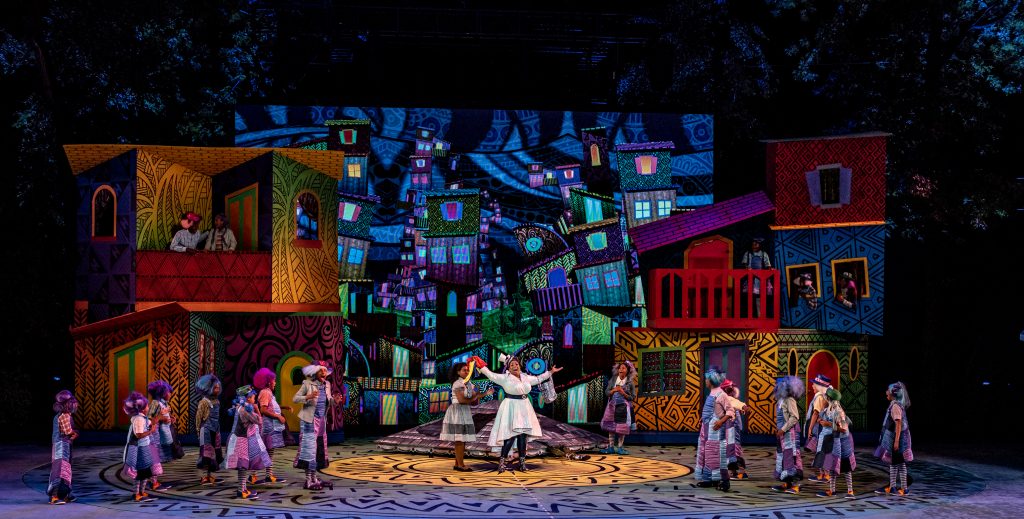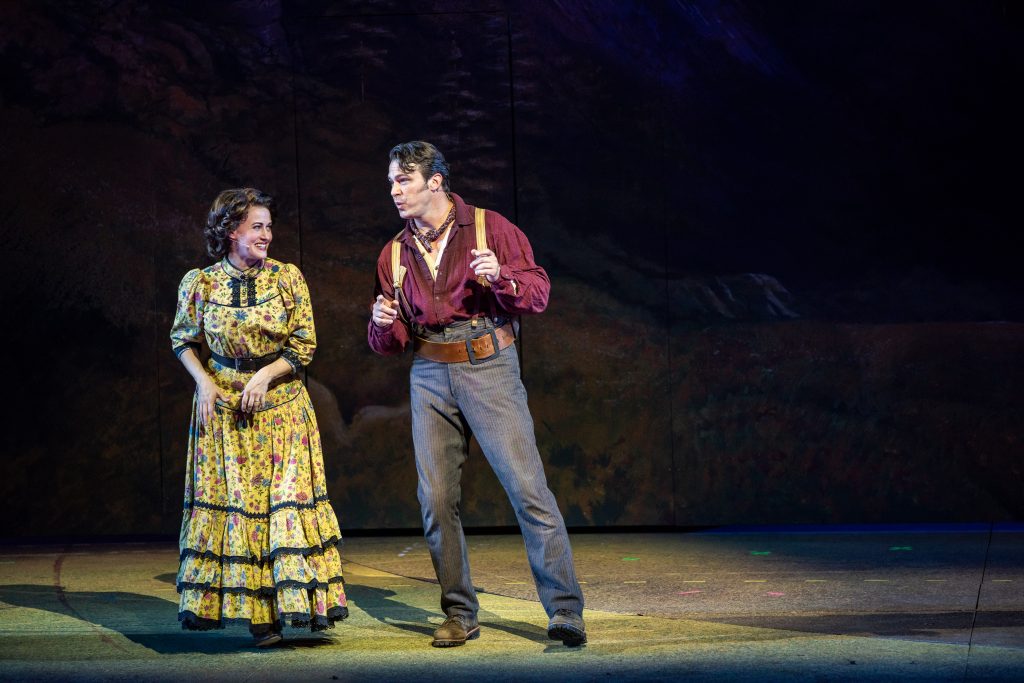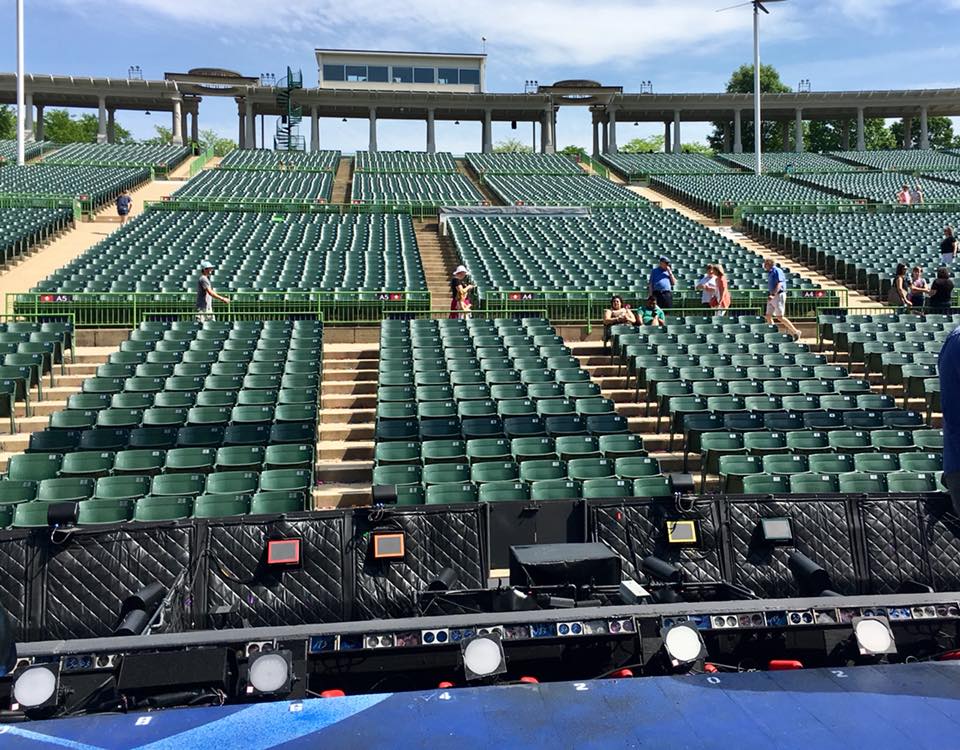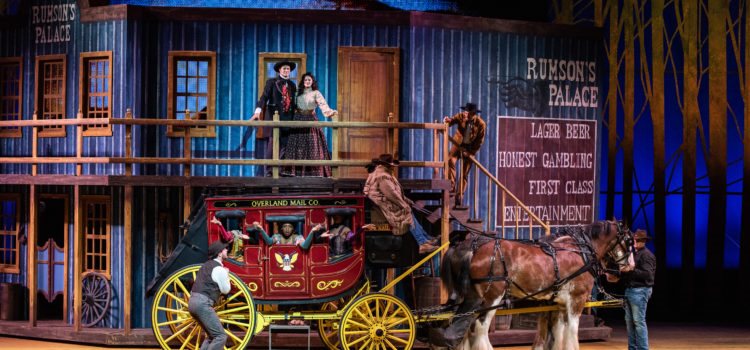By Lynn Venhaus
As shiny as a disco ball and as bouncy as a 1970s dance party, “Sister Act” overflows with heart and soul to end the Muny’s 105th season on a high note, the cherry on top of a sensational summer.
The upbeat Alan Menken score may not be as familiar as his Disney animation renaissance classics, but you’ll be humming a happy tune and leaving the Forest Park amphitheater giddily grinning with a spring in your step.
For this adaptation of the 1992 feel-good hit movie starring Whoopi Goldberg, composer Menken teamed up with lyricist Glenn Slater, who is known for “School of Rock,” “A Bronx Tale,” and the animated feature musical “Tangled.” All the songs are originals, no songs used in the movie are featured.
The screen-to-stage musical comedy made its debut in Pasadena in 2006, moved on to London’s West End starring Patina Miller in 2009, and opened on Broadway in 2011 with Miller in the lead role. It earned five Tony Award nominations, including best musical, book, and original score (losing those three to “The Book of Mormon”).
“Take Me to Heaven,” “Raise Your Voices” and “Spread the Love” are quite satisfying super-sized soul sister anthems.

And the more intimate solos tug at the heartstrings – especially “I Haven’t Got a Prayer” by angelic-voiced Mamie Parris as Mother Superior and “I Could Be That Guy” by James T. Lane, touching as ‘Sweaty’ Eddie, both well-liked Muny veterans.
But it’s a star-making performance by wheelchair-user Meredith Aleigha Wells as postulant (pre-novice) Sister Mary Robert in her show-stopping “The Life I Never Led” that’s the most memorable moment.
The book by Bill and Cheri Steinkellner, two-time Emmy Award winners for “Cheers,” with additional material by Douglas Carter Beane, takes the movie screenplay by Joseph Henry and transfers the place from Reno and San Francisco to Philadelphia and the time to 1977-1978 from the movie’s contemporary (1992) setting, but keeps the story basically the same.
A lounge singer witnesses an informant executed by her thug boyfriend, then police hide her in a convent for witness protection until she can testify, where undercover as Sister Mary Clarence, she takes over a rough-sounding choir and transforms it into a vocal powerhouse.
She tussles with the Mother Superior while winning over the other nuns. Suddenly, their vivacious music numbers start attracting churchgoers, filling the pews, and becoming a local sensation. And she’s stayin’ alive (I couldn’t resist).

A mash-up of a police procedural with a sitcom-y vibe (think that ‘70s chestnut “Barney Miller”), the plot’s routine, but the passion of the performers isn’t. They dive into Funkytown with glee.
What made the movie so fun – transforming Motown songs from romantic love to spiritual love by a cloistered convent choir – becomes contagious crowd-pleasing disco/R&B/gospel confections on the vast outdoor stage, including an exuberant “Sunday Morning Fever” – complete with gyrating altar boys and the nuns shaking their groove thing.
The City of Brotherly Love – and cheesesteaks — adds further meaning because of its “Philadelphia Sound,” popularized in the late ‘60s and ‘70s that laid the soul music foundations for disco, with funk influences, jazzier melodies, and lush arrangements.
Music Director Michael Horsley integrated the electric rhythms with such pizzazz, elevating the sweeping strings section (5 violinists, 2 viola/violinists, 2 cellos and 1 harp) along with the fabulous rich sound of 4 woodwinds, 3 keyboards, 2 trumpets, 2 French horns, 2 trombones, and 1 tuba, guitar, bass, drums, and percussion.
Bryonha Marie winningly plays Deloris Van Cartier with panache, sassy posing as a nun and silky in delivering such various sounds as “Fabulous, Baby!” and the poignant “Sister Act.” Memorable as the Mother Abbess in the Muny’s 2021 “The Sound of Music,” she plays a very different nun this time around. Deloris turns the beat around, inspires female empowerment, and makes their numbers into dance-floor type celebrations.

Katie Geraghty, breakout scene-stealer as a Little Red replacement in the acclaimed “Into the Woods” Broadway revival last year, is an ebullient Sister Mary Patrick, her naivete and chirpy personality a delight.
The supporting players brim with brio – especially the goofy trio of goons: Rob Colletti as Jack Black-like Joey, Brandon Espinoza as Pablo, and Darron Hayes as dim TJ in “Lady in the Long Black Dress” and with the imposing villain Curtis Jackson, played by a formidable Alan H. Green, who was memorable as the Cobra Kai sensei John Kreese in last year’s “The Karate Kid-The Musical” premiere at Stages St. Louis. Just listen to those words of “When I Find My Baby”!
Thom Sesma, as Monsignor O’Hara, is very funny as he watches his church go from impending closure to standing room only — and can bust a move as well.
The nuns are luminous, with Madeleine Dougherty, Rebecca Young and Michelle Burdette Elmore noteworthy as Sisters Mary Lazarus, Mary Martin-of-Tours and Mary Theresa respectively.
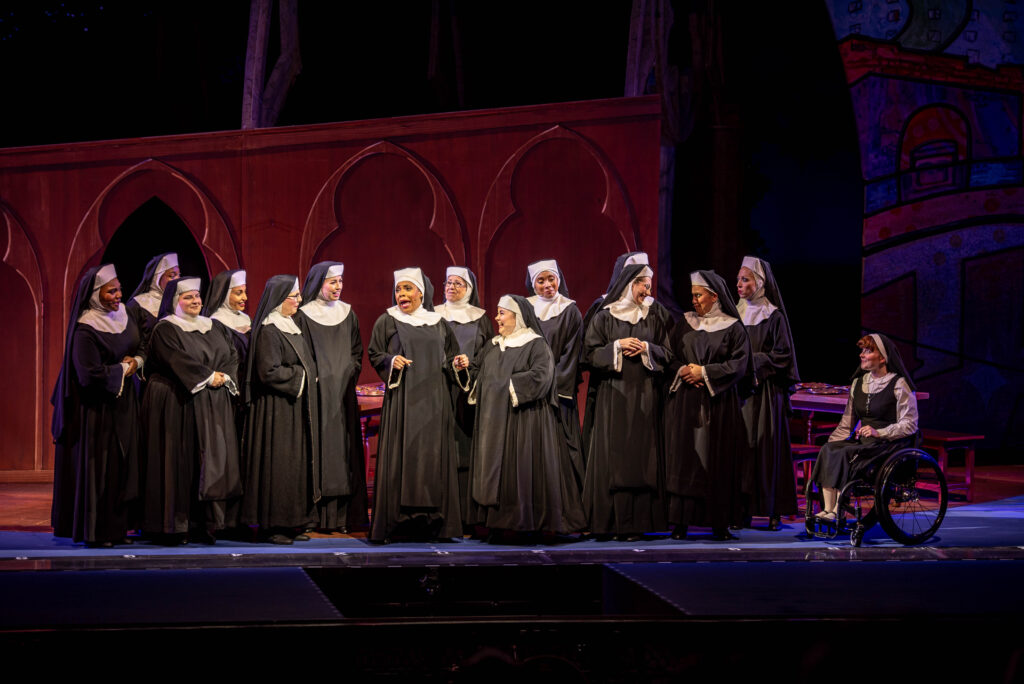
Director-choreographer Denis Jones’ trademark pep-in-the-step is present. When I see his name in the credits, I know he will endear with his crisp and snappy style, having earned St. Louis Theater Circle Awards for directing and choreographing “Chicago” (2021) and for his eye-popping work in “42nd Street” (2015) and “A Chorus Line” (2017), among others.
Besides the inherent comedy in nun-focused musicals as amusing entertainment, Jones has emphasized that cheerful bond like the 1979 disco anthem “We Are Family” throughout the show.
In elaborate costume designer Leon Dobkowski’s capable hands, the costumes are a time-capsule of Studio 54, conveying progression from standard nun garb to ultra-glam sequined habits, and the fantasy dancers are wildly adorned in sparkly attire, silver lame and over-the-top styles seen on Elton John and David Bowie. There’s also the garish fashions of that ’70s era, with eyesore checks and plaids and the god-awful polyester.
Wig designer Kelley Jordan has supplied appropriate big hair for the secular singers, dancers, and hitmen.
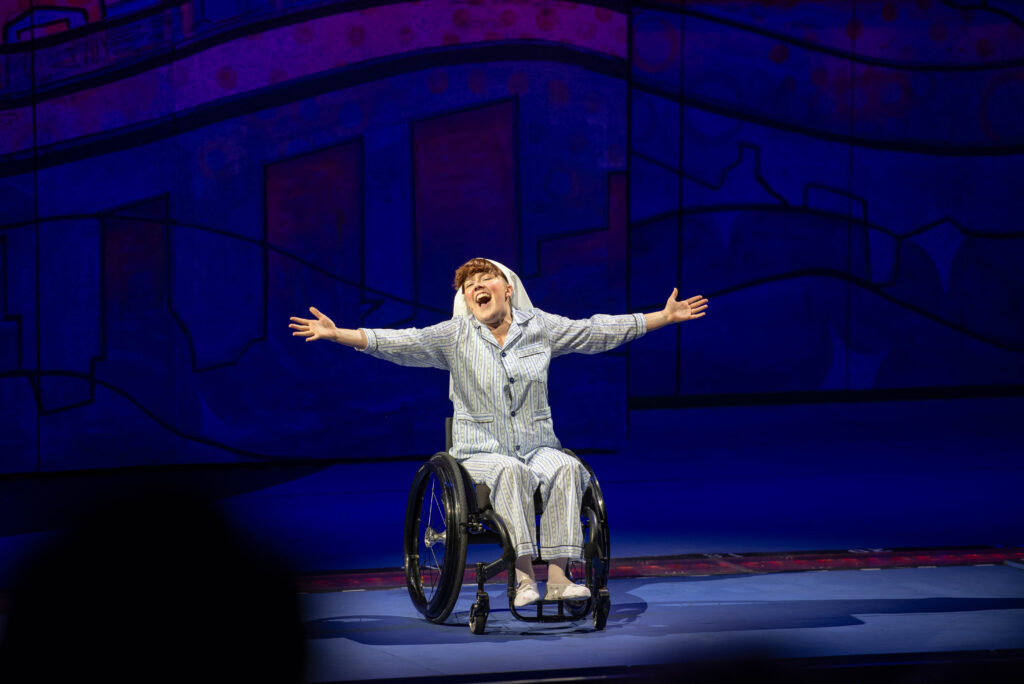
Scenic Designer Edward E. Haynes Jr., who had so much fun with the flamboyant sets last year for “Joseph and the Amazing Technicolor Dreamcoat,” applies a heavy layer of kitsch – vintage Naugahyde! – on nightclub, neighborhood bar, and Eddie’s apartment while being ingenious on the open church design for the turntable.
Video designer Kevan Loney carries that retro flair onto the screens while lighting designer Shelby Loera effectively illuminated the moods.
The Muny premiere follows the regional premiere by Stages St. Louis in 2016, and the first national tour came to the Fox Theatre in 2013.
Laugh-out-loud funny throughout, this lighthearted romp gets the crowd on their feet with a rousing curtain call. Oh, what a jubilant late-summer night it was, complete with fireworks.
And “Sister Act” defines the faith, hope, and love St. Louisans have for this cultural institution and generational tradition.
And just like that, the Muny’s wonderful, celebrated summer comes to a dandy grand finale.
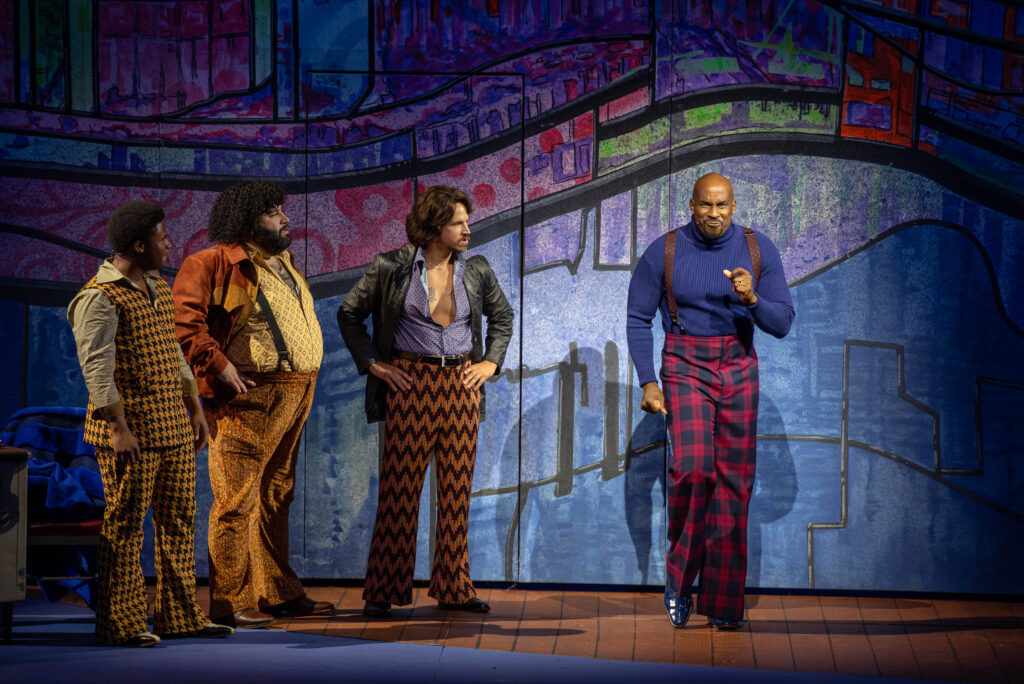
Reflections on the Muny’s championship season of 2023
As the days lose their light and autumn looms, it’s time to rejoice, to revel in the communion that 11,000 people can share watching shining stars on stage, and to marvel at the never-ending joyful noise a St. Louis summer yields.
This has been a season marked not only by the major spectacle we have come to expect on the largest outdoor stage in the country, but also a seven-show arc of uncommon grace – a genuine depth of feeling in each well-executed production.
From premieres “Beautiful: The Carole King Musical” and “Sister Act” bracketing a standout season that featured technically proficient creative teams mastering that elusive Muny magic and superior quality talent delivering the special moments we’ll remember deep in December: The transformative power of music – through musical theater – is the reason we flock to The Muny year after year.
In every performance, there was a palpable sense of yearning – a future Hall of Fame talent finding her voice, outsiders opening their hearts in a timeless fairy tale classic, of high-stakes gamesmanship and personal cost in a political arena, star-crossed lovers clinging to a dream, unearthing your worth and wish fulfillment in a flower shop, discovering love and nurturing friendship in a bleak place, and using your gifts to foster community.
Believe. Longing. Belonging. Overcoming. All were themes this summer, and you could feel the Muny audience lean in, the risks worth the rewards. We all shared something very special, this 105th year – it felt different. We could dream again, after coming out of the dark — all the drama of a public health emergency, global pandemic in pre-vaccine times, and the isolation that went with it.
And it sure was fun to be together. God willing, see you next year for 106.
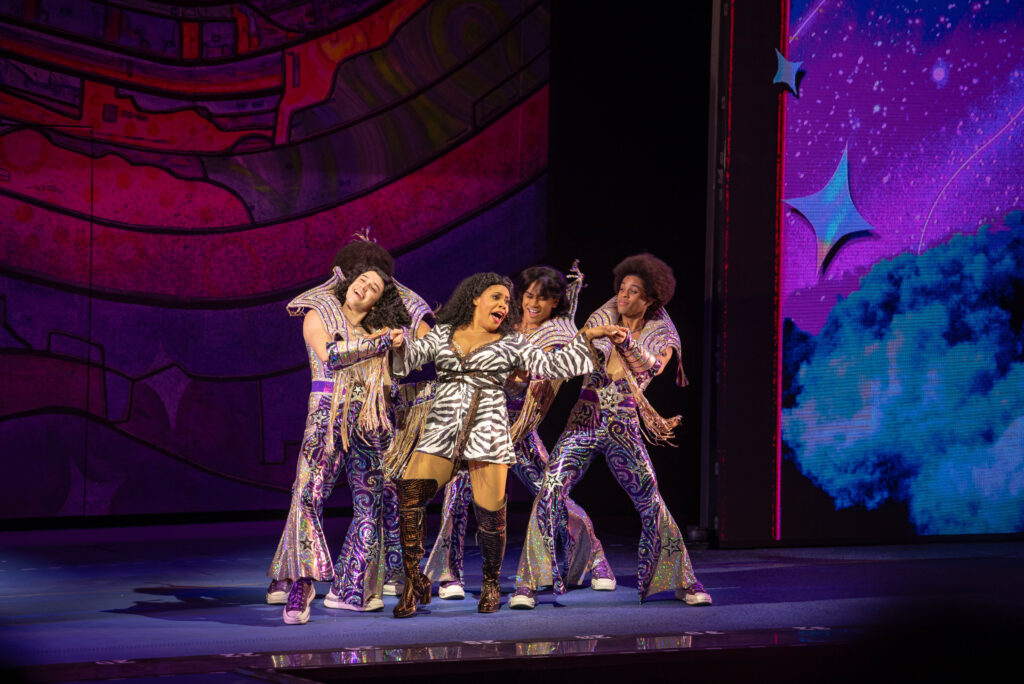
The Muny presents “Sister Act” Aug. 14-20 at 8:15 p.m. at the outdoor stage in Forest Park. For tickets or more information, visit www.muny.org.

Lynn (Zipfel) Venhaus has had a continuous byline in St. Louis metro region publications since 1978. She writes features and news for Belleville News-Democrat and contributes to St. Louis magazine and other publications.
She is a Rotten Tomatoes-approved film critic, currently reviews films for Webster-Kirkwood Times and KTRS Radio, covers entertainment for PopLifeSTL.com and co-hosts podcast PopLifeSTL.com…Presents.
She is a member of Critics Choice Association, where she serves on the women’s and marketing committees; Alliance of Women Film Journalists; and on the board of the St. Louis Film Critics Association. She is a founding and board member of the St. Louis Theater Circle.
She is retired from teaching journalism/media as an adjunct college instructor.

